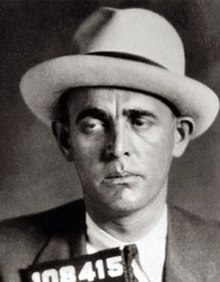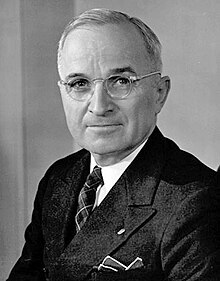
Gein
Born on August 27, 1906, to an alcoholic handyman and a maniac religious mother, the youngest of two boys, Gein is odd from birth ... and is made odder by his mother, Augusta Wilhelmine. Relocated to an isolated farm outside of Plainfield, Wisconsin in 1914, Ed is allowed to leave the farm only to go to school ... at home, he receives daily lectures from his mother on the innate immorality of the world, the evils of drinking, and the how women are instruments of Satan, and is read passages from the Bible that deal with death, murder, and divine retribution. It isn't long before school mates notice the youngest Gein boy is different, and begin bullying him for his shyness (and at home he is punished for even attempting to make friends with the few children that don't tase him) and small stature (he is only 5'5" at his adult height), and for his strange mannerisms, like laughing out loud at nothing at all, as if he is hearing private jokes in his head.
Gein
Father gone as a result of his excessive drinking at the age of 66 in 1940. Ed's brother is the next to exit the family ... dying under mysterious circumstances in a burnt marsh where the brothers had been working. Ruled an asphyxiation accident by the local coroner, in hindsight it now appears more likely that his brother Henry is Ed's first murder victim in 1944. After two strokes, his mother dies in 1945 at the age of 67. Devastated by the loss of his "... only friend and one true love," with the death of his mother, Gein is left alone on the 160-acre farm ... where there is now no one to stop him from indulging in his twisted sexual fantasies.

The Gein Farmhouse
Earning money from odd jobs about the region, and a federal farm subsidy, Gein boards up the rooms his mother use to use (the upstairs of the house, the downstairs parlor and living room) and lives in a small space near the kitchen, reading death-cult magazines and adventure stories dealing with cannibals and Nazi death camps ... reading until he begins living out his fantasies. And so it is that Gein starts sneaking out in the dead of night, to dig up female corpses from local graveyards for a series of "experiments" in which bodies are cut up and played with towards the goal of Gein someday, somehow, becoming a woman (he literally makes a female body suit he can climb into ... authorities later believe he has broken into over 40 graves)). And when there are no graves worth plucking, Gein escalates his criminal activities into murder ... killing the 51-year-old owner of a saloon in the town of Pine Grove, Mary Hogan, in the head with a .22 pistol, and then dragging the body back to the farm on a sled in 1954.

One of Gein's Rooms
Mary Hogan
The Saloon
Hogan After Gein
Thought of as just some harmless local town color, the truth of Gein's character comes out when he is not able to resist murdering 58-year-old Bernice Worden. In need of some anti-freeze, Gein finds Worden alone in her store on cold Saturday morning, walks over to the gun display in the shop, takes down a .22 rifle, inserts a single bullet he has brought from home, and shoots Worden dead. Murder finished, the maniac then steal's the cash register and its contents of $41, locks up the store, and using the back door, takes the corpse home for new "experiments."
Worden
The Hardware Store
Later that day when Worden's son Frank, who also is Plainfield's deputy sheriff, returns from hunting, he finds the store locked, his mother missing, and a puddle of blood on the floor ... he also finds a receipt for Worden's last transaction, a slip of paper noting the purchase of a half gallon of anti-freeze. Remembering a conversation from the day before in which Gein mentioned needing anti-freeze, Worden takes off for the Gein Farm, where, as the saying goes, the shit quickly hits the fan. Denying any knowledge of the missing women at first, Gein soon changes his story when authorities begin exploring the farm in search of Worden ... and discover the shy farmer's house is a real life chamber of horrors!
Dark Secrets Within
So awful that one officer goes berserk and starts banging Gein's head and face into a brick wall (causing Gein's first confession to be ruled inadmissible in court), the catalog of horrors within the walls of the farmhouse include: scores of bones and bone fragments, a wastebasket made of human flesh, chair seats cushioned by human skins, skulls on the posts of Gein's bed, an assortment of female skulls (some with the tops sawed off), eating bowls made from human skulls, a corset made out of a female torso, leggings made out of human leg skin, skin masks made from female heads, Mary Hogan's face in a paper bag and her skull in a box, Worden's head in a burlap sack, Worden's heart in a plastic bag beside Gein's potbellied stove, the vulva of nine different women in a shoe box, a purse with grips made of human skin, a belt made out of human female breast nipples, four noses, a tom-tom made from a coffee can with human skin stretched over the top, a pair of lips on a window shade drawstring, a human face lamp shade, dozens of fingernails from human females, a refrigerator full of frozen human organs, and Worden's body in a shed, decapitated, and hung upside down by ropes around the wrists and a crossbar at her ankles, as if she were a deer being dressed prior to storage and eating.
The Shed's Horror
Souvenir
Skull Bowl
Headlines
Obviously not playing with a full deck, Gein is found mentally incompetent of standing trial, and is sent to the maximum-security Central State Hospital for the Criminally Insane in Waupun, then later transferred to the Mendota State Hospital in Madison, Wisconsin. Never free again, Gein dies at the institute from lung cancer in July of 1984 at the age of 77.
Leaving Court - 1968
Dead ... and yet not gone at all, after his death Gein becomes the boogy-man for generations of Americans in fact and in fiction. Robert Bloch uses the man's life for his fictional character Norman Bates in his 1959 suspense novel, Psycho ... which Alfred Hitchcock in turn makes into one of the most famous thrillers in Hollywood history. And he is also the source for Leatherface in The Texas Chain Saw Massacre, Buffalo Bill in The Silence of the Lambs, and Bloody Face from television's American Horror Story. Beyond the sound of screams, examples of songs in which Gein serves as cannibal goblin include Slayer's "Dead Skin Mask," Mudvayne's "Nothing To Gein," the Ziggen's "Ed Gein," and Blind Melon's "Soup."

Movie Poster
11/16/1957 ... bonzo-brained Ed Gein "experiments" on a corpse for the last time ... MERCY!!!!!!!!!!!!!!!!





















